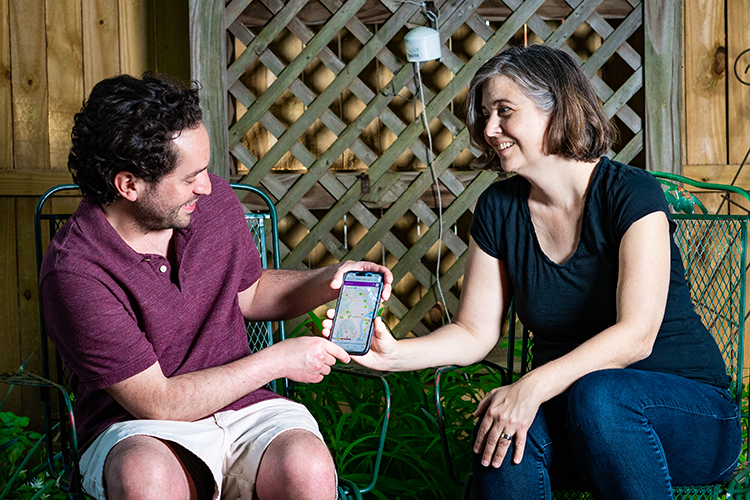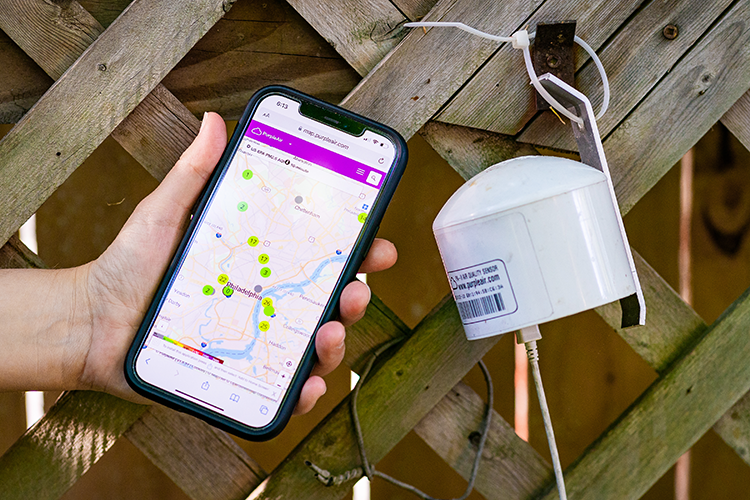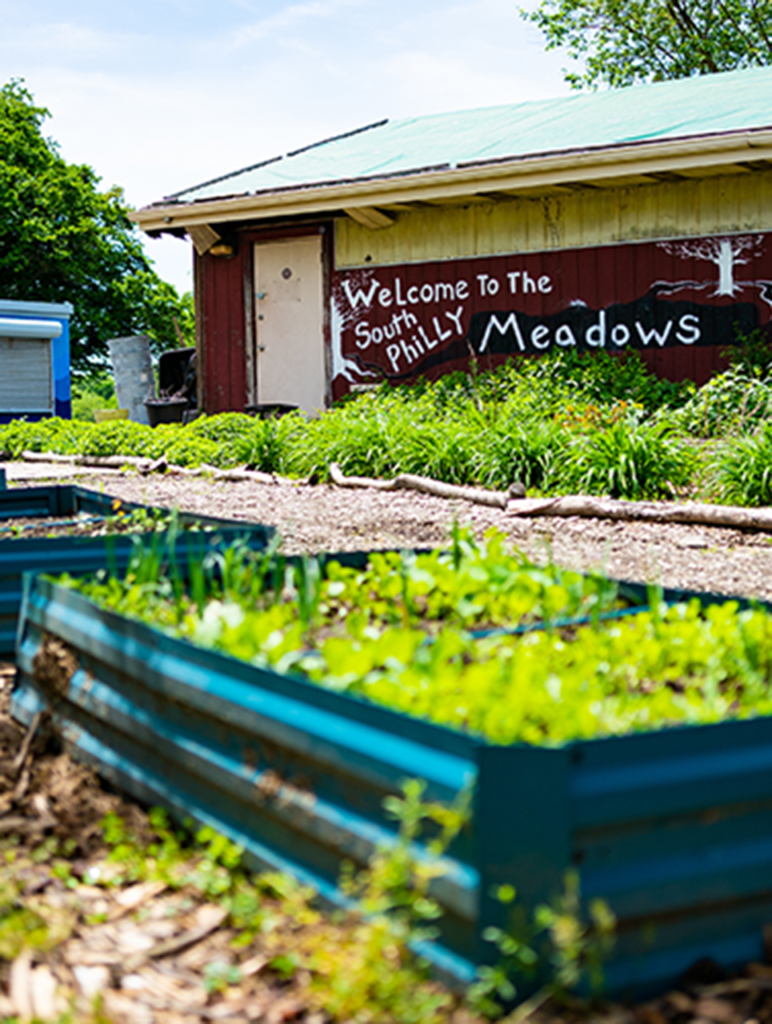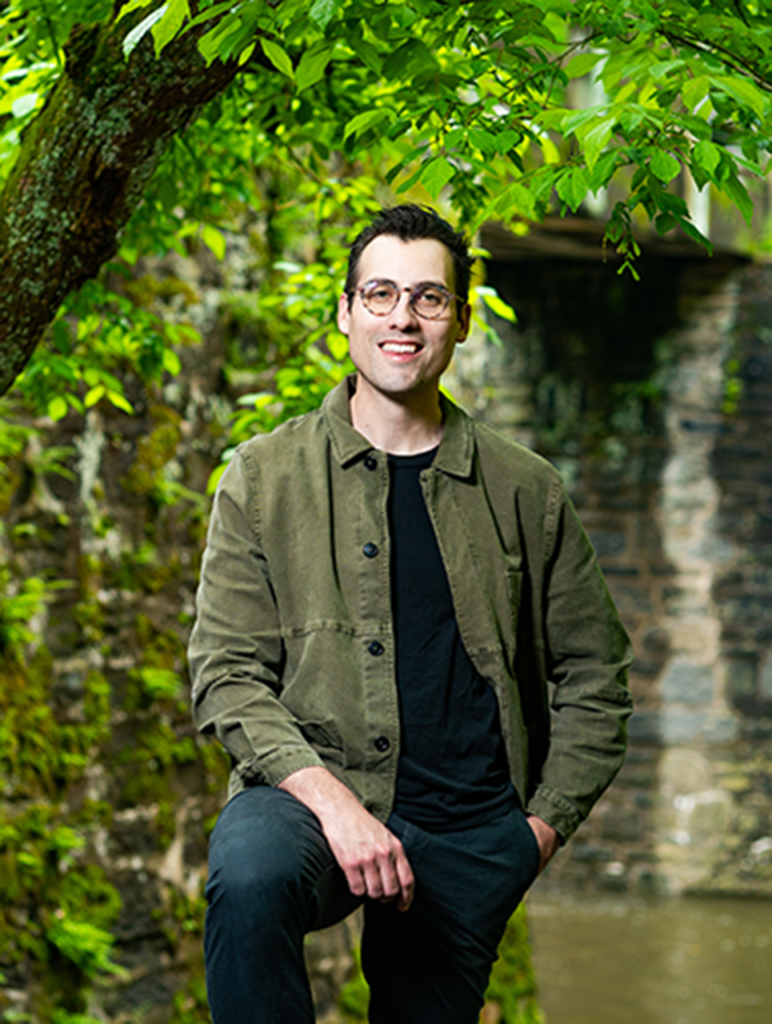Air is something we share. But clean air, it turns out, is not equally available to all.
Using technology with an almost cartoonish name, the PurpleAir monitor, Christina Rosan thinks making disparities in air quality “in your face” will lead to more equitable, citizen-informed public policies. Advocating for clean air everywhere, she believes, could promote climate resiliency, restorative social justice and more livable neighborhoods across Philadelphia.
We want to help communities be able to make demands from the City … to get more integrated policies.”
— Christina Rosan, associate professor at Temple University
Rosan, an associate professor at Temple University in the Department of Geography and Urban Studies, hopes to use community data and stories to inform green infrastructure investment to confront past, present and future neighborhood challenges.
“We’re trying to address the fact that many communities in Philadelphia have overlapping vulnerabilities that are going to get worse with climate change,” Rosan says. “We want to help communities be able to make demands from the City, framed in climate language, to get more integrated policies that help them deal with current and coming problems.”
Rosan and Russell Zerbo, a Clean Air Council advocate, are helping lead a team of academics and advocates that recently won a $150,000 planning grant from the National Science Foundation’s Smart and Connected Communities program to tackle urgent environmental injustice problems. Their project, PREACT (Planning for Resilience and Equity through Accessible Community Technology), fosters community engagement as a basis for equitable urban sustainability.
Enter PurpleAir monitors. Each about the size of a softball and with a $250 price tag, the monitors measure a regulated pollutant, particulate matter up to 2.5 micrometers. Zerbo explains that particulate matter is the only thing you can complain about, such as when smoke or dust comes onto your property. But you can’t make air quality complaints through 311.
Rosan and Zerbo want PurpleAir monitors on libraries and schools, where the technology can be paired with education. They believe that understanding air quality should become part of a school’s science curriculum, providing communities with hard data to inform conversations with City officials.

As the air monitoring network expands, residents viewing the monitoring map could see the disparities. Why is the air cleaner one zip code away? What is causing our problem locally? Is it an illegal dump or something else? Neighborhoods could then request more sophisticated assessments by the City and be part of any interventions.
“We’re trying to connect immediate needs for good schools, affordable housing, safe parks, and dealing with gun violence, while working with communities to help them see that climate investments could solve some of those problems,” Rosan explains.
Too often environmental improvements in neighborhoods are precursors to gentrification and “sustainability” code for upscaling housing and amenities that displace longtime residents.
Rosan wants to flip the conversation about “greening” and climate change resiliency to be about restorative justice — engaging residents to direct efforts to improve their neighborhoods in ways that make it possible for them to stay. Understanding what causes poor air quality can provide the intersection for the City’s infrastructure investments and neighborhood permanence.

For too long there has been a disconnect.
The City advocates for a tree canopy while many neighborhoods suffer under terrible living conditions. It’s not that residents don’t care about climate change, but they face more dire needs. It’s hard to get excited about trees when your block is awash in illegal dumping.
Distressed neighborhoods have been playing defense, fighting off development or further environmental degradation. Rosan and Zerbo think air quality data can help communities change their game to offense.
“We provide residents with the tools to understand existing problems and start to think strategically with the City in terms of a Neighborhood Bill of Rights: every neighborhood needs to have clean air, affordable housing, good schools, trees, parks, safety from gun violence, access to healthy food.
This is what makes sustainable communities,” Rosan says.
Connecting greening and climate investments with community needs is central to their efforts. Rather than dismissing trees as unimportant, residents might consider that an investment in trees could bring jobs, and that greening their streets, or a park that kids could safely play in, could dramatically improve the environmental health for all residents. Longer term investments in green infrastructure could bring relief now to stressed communities.
Rosan and Zerbo’s work aligns with other city initiatives. The Environmental Justice Advisory Commission is charged with creating a whole-government approach to addressing environmental injustice. The Community Health Act, legislation proposed by City Councilmembers Helen Gym, Kendra Brooks and Jamie Gauthier, aims to generate a citywide environmental justice map. The bill would enable the Department of Public Health to ensure that industrial projects don’t inflict further harm on communities that have already suffered an undue burden of pollution.
For Rosan, opportunity is in the air. “We have the technology,” Rosan says. “That’s what’s exciting about climate change. As terrifying as it is, there are a lot of really cool integrated approaches that will come out of it, making us rethink solutions.”
To see where regional sensors are located and learn more about the monitors, visit map.purpleair.com








